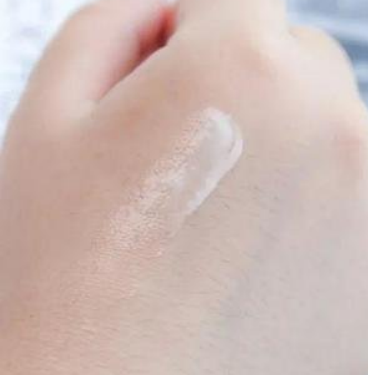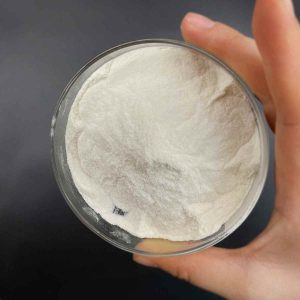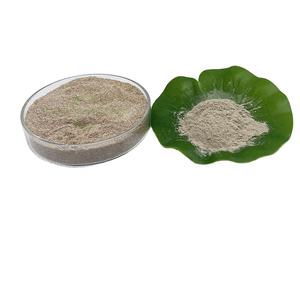1. Introduction
Just 24 hours ago, the U.S. Environmental Protection Agency (EPA) fast-tracked approval for a new class of low-toxicity herbicide adjuvants that rely heavily on anionic surfactants like sodium lauryl sulfate to boost performance while reducing environmental impact. This move signals a major shift toward smarter, more efficient weed control—especially as farmers face increasing pressure to minimize chemical runoff and protect pollinator habitats.

While most consumers associate sodium lauryl sulfate (SLS) with shampoos or toothpaste, its role as a surfactant for herbicides is both powerful and underappreciated. In agricultural science, SLS—also known as sodium dodecyl sulfate or na lauryl sulfate—is prized for its ability to lower surface tension, helping active ingredients cling to and penetrate waxy plant cuticles.
2. Why Sodium Lauryl Sulfate Excels in Weed Killer Formulations
Sodium lauryl sulfate is an anionic surfactant, meaning it carries a negative charge in solution. This property makes it highly effective at dispersing and emulsifying oil-based herbicides in water-based sprays—a common challenge in field applications.
When mixed into a tank with glyphosate or other systemic herbicides, SLS acts as a wetting agent for grass and broadleaf weeds alike. It reduces the contact angle of spray droplets, allowing them to spread evenly across leaf surfaces instead of beading up and rolling off.
- Enhances adhesion to hydrophobic plant surfaces
- Improves rainfastness (resistance to wash-off)
- Works synergistically with methylated seed oil and non-ionic surfactants like polysorbate 80 or Span80
3. SLS in Combination: Building Smarter Surfactant Blends

Modern herbicide formulations rarely rely on a single surfactant. Instead, they combine anionic, non-ionic, and sometimes amphoteric types to maximize performance. For example, pairing SLS with coco betaine (also called cocamidopropyl betaine or amidopropyl betaine) creates a more stable foam and improves leaf retention.
Other common partners include alkyl polyglucoside, decyl glucoside, and coco glucoside—bio-surfactants derived from renewable sources that offer eco-friendly alternatives without sacrificing efficacy. Meanwhile, ethoxylated alcohols like sodium lauryl ether sulfate (also called sodium lauryl ether sulphate or SLES) provide additional solubilizing power.
It’s worth noting that while sodium laureth sulfate (or laureth sulphate) is milder on skin, SLS delivers stronger wetting action—making it preferable in agricultural over cosmetic contexts.
4. How SLS Compares to Other Anionic and Cationic Surfactants
Not all surfactants are created equal. Sodium dodecylbenzene sulfonate, ammonium lauryl sulfate, and sodium lauroyl sarcosinate are also anionic surfactants used in agrochemicals, but each has distinct solubility and foaming profiles.
Cationic surfactants like cetyl trimethyl ammonium bromide (CTAB) or cetyltrimethylammonium bromide are less common in herbicides because they can bind too tightly to plant surfaces, reducing active ingredient mobility. In contrast, anionic cationic blends are rare in this space due to potential incompatibility and precipitation.

Fluoro surfactants offer ultra-low surface tension but are expensive and face regulatory scrutiny. That’s why cost-effective, biodegradable options like SLS remain industry favorites.
5. Practical Use: How Much SLS to Add Per Gallon?
For most post-emergent herbicides, a typical recommendation is 1–2 teaspoons of sodium lauryl sulfate per gallon of water—though this varies by product and target weed species. Always follow label instructions, as overdosing can cause phytotoxicity or foaming issues in spray tanks.
Commercial-grade sodium lauryl sulfate for sale from suppliers like Rohit Surfactants Private Limited is often formulated specifically for agricultural use, ensuring consistent purity and performance. Look for products labeled as ‘surfactant for weed killer’ or ‘lawn wetting agent’ for best results.
6. Sustainability and the Rise of Bio-Surfactants
While SLS is biodegradable under aerobic conditions, the industry is increasingly exploring plant-derived alternatives like sodium cocoyl glutamate, sodium coco sulfate, and lignin sulfonate. These bio surfactants offer similar functionality with lower aquatic toxicity.
However, SLS remains unmatched in cost-to-performance ratio for large-scale applications. Innovations like encapsulation or hybrid systems (e.g., SLS + pluronic 127 or poloxamer 188) may bridge the gap between efficacy and environmental safety in the near future.
7. Conclusion
Sodium lauryl sulfate may be best known from your bathroom shelf, but its real power shines in the field—literally. As a versatile, high-efficiency surfactant for herbicides, SLS helps farmers achieve better weed control with less chemical waste. When smartly combined with non-ionic surfactants, amphoteric co-surfactants like coco amido propyl betaine, or bio-based alternatives, it forms the backbone of next-generation agrochemical delivery systems. With regulatory support growing for smarter adjuvant use, SLS is poised to remain a staple in sustainable weed management for years to come.
Our Website founded on October 17, 2012, is a high-tech enterprise committed to the research and development, production, processing, sales and technical services of ceramic relative materials such as Unlock. Our products includes but not limited to Boron Carbide Ceramic Products, Boron Nitride Ceramic Products, Silicon Carbide Ceramic Products, Silicon Nitride Ceramic Products, Zirconium Dioxide Ceramic Products, etc. If you are interested, please feel free to contact us.


